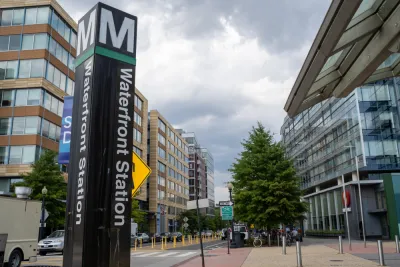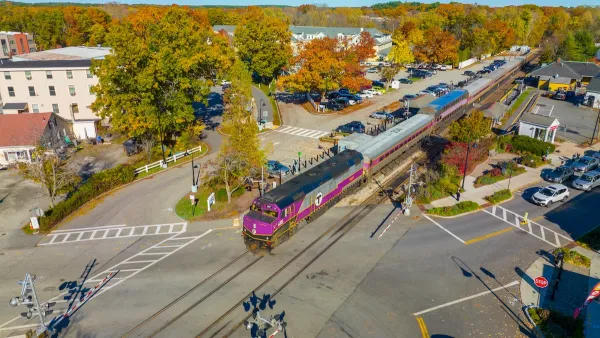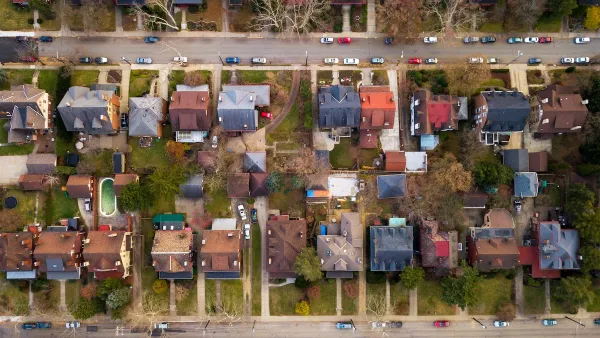The agency is seeking to execute joint development agreements to support more density near transit stations and boost affordable housing production.

The Washington Metropolitan Area Transit Authority (Metro) wants to encourage transit-oriented development near its stations, reports John Aaron. "The agency hopes to execute new joint development agreements at 20 more stations in the next 10 years."
According to Liz Price, Metro’s vice president of real estate and parking, "Joint development agreements are not new to Metro, which has seen 55 buildings built at 30 stations since Metro opened in the 1970s."
Overall, the report says there are development opportunities at 40 stations — there are 91 in the system currently — totaling more than 500 acres, which could translate to 31 million square feet of new development and 26,000 new housing units.
Per Metro's strategic plan, the agency aims to "support higher density, mixed-use development," "secure infrastructure investments," "maximize economic development," and "support transit operations" with increased ridership and revenue. As Aaron notes, "Price also said that while the strategic planning process predates the pandemic, income from the developments would help Metro address potential financial shortfalls in the future."
FULL STORY: Metro looks to accelerate development near stations

National Parks Layoffs Will Cause Communities to Lose Billions
Thousands of essential park workers were laid off this week, just before the busy spring break season.

Retro-silient?: America’s First “Eco-burb,” The Woodlands Turns 50
A master-planned community north of Houston offers lessons on green infrastructure and resilient design, but falls short of its founder’s lofty affordability and walkability goals.

Delivering for America Plan Will Downgrade Mail Service in at Least 49.5 Percent of Zip Codes
Republican and Democrat lawmakers criticize the plan for its disproportionate negative impact on rural communities.

Test News Post 1
This is a summary

Test News Headline 46
Test for the image on the front page.

Balancing Bombs and Butterflies: How the National Guard Protects a Rare Species
The National Guard at Fort Indiantown Gap uses GIS technology and land management strategies to balance military training with conservation efforts, ensuring the survival of the rare eastern regal fritillary butterfly.
Urban Design for Planners 1: Software Tools
This six-course series explores essential urban design concepts using open source software and equips planners with the tools they need to participate fully in the urban design process.
Planning for Universal Design
Learn the tools for implementing Universal Design in planning regulations.
EMC Planning Group, Inc.
Planetizen
Planetizen
Mpact (formerly Rail~Volution)
Great Falls Development Authority, Inc.
HUDs Office of Policy Development and Research
NYU Wagner Graduate School of Public Service





























